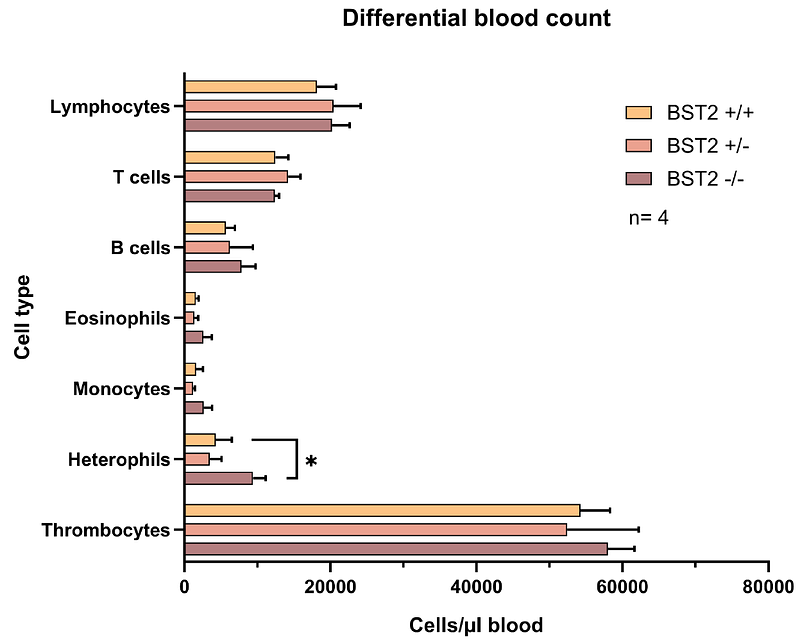Generation and initial characterization of in vivo knockout of tetherin/BST2 in chicken

Generation and initial characterization of in vivo knockout of tetherin/BST2 in chicken
Ungrova, L.; Trefil, P.; Plachy, J.; Mucksova, J.; Kalina, J.; Reinisova, M.; Hartle, S.; Galikova, E.; Kucerova, D.; Krchlikova, V.; Pecenka, V.; Karafiat, V.; Hejnar, J.; Elleder, D.
AbstractTetherin/BST2 is an antiviral restriction factor initially described in mammals. It is active against multiple enveloped viruses at the budding phase, where it is able to physically link the budding virions to the virus-producing cell. We and others have previously identified tetherin orthologs in birds, and characterized the antiviral activity and interferon-inducibility of chicken tetherin. In this work, we have generated an in vivo model of tetherin absence in chicken by CRISPR/Cas9 modification of chicken primordial germ cells (PGC). The modified PGCs were transplanted into roosters with suppressed endogenous spermatogenesis, and transgenic (tetherin knockout) progeny was obtained by further crosses. The viability and phenotype of tetherin knockout animals did not differ from wild type chicken. In more detailed investigation, flow cytometry based differential white blood cell count revealed an increased number of heterophils in tetherin knockouts. Upon challenge with avian sarcoma and leukosis virus (ASLV), a prototypic avian retrovirus, we detected increase in viremia at days 6 and 13 post infection in tetherin knockout animals. The increased virus susceptibility is consistent with absence of antiviral tetherin. In summary, we introduce a new in vivo knockout model of chicken antiviral gene tetherin. These animals can be used in further characterizations of avian antiviral defenses and also to define thus far unknown physiological effects of tetherin in birds.


